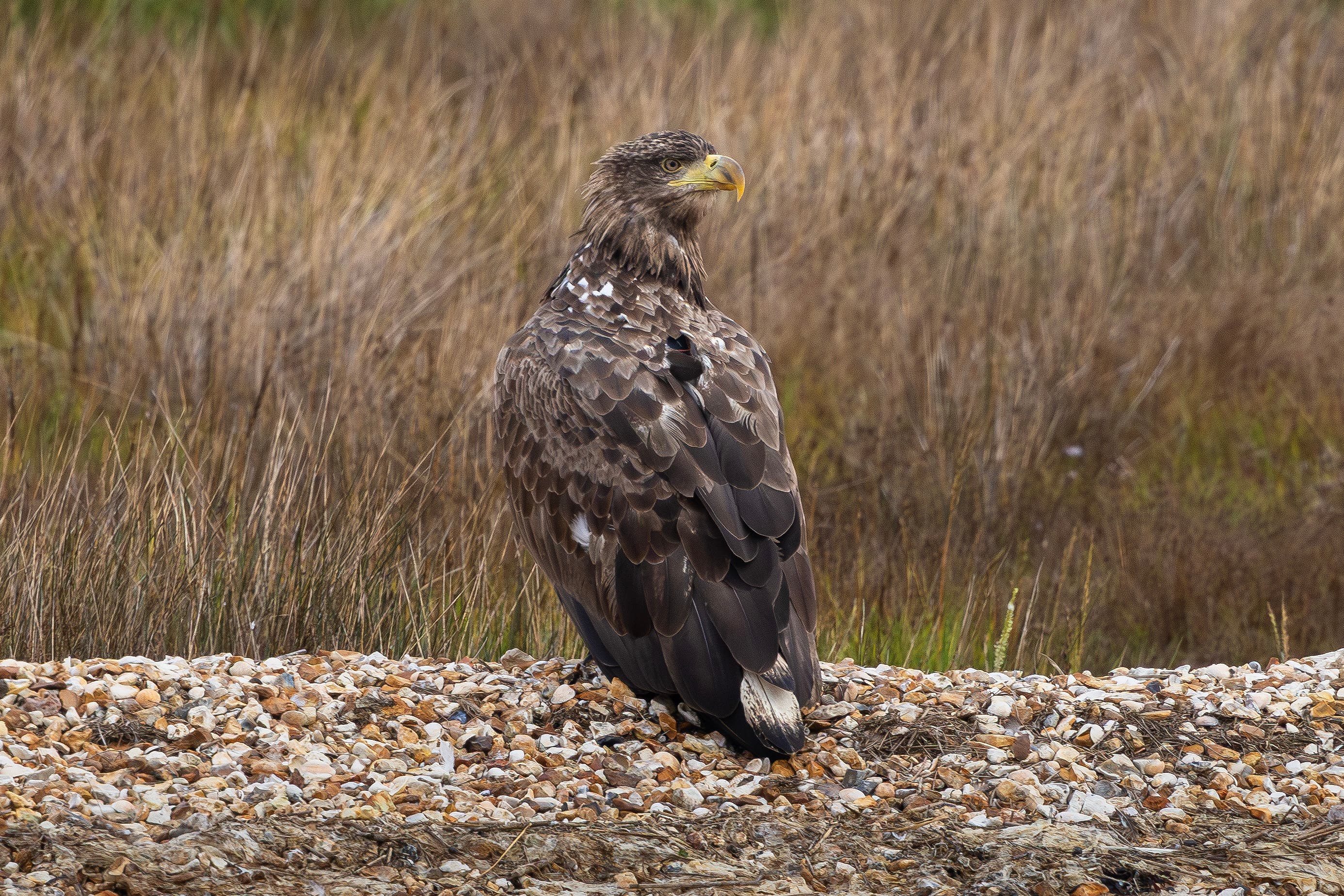England’s white-tailed eagles feasting on cuttlefish but not lamb, experts say
Innovative study has involved hundreds of hours in the field watching the birds which have been reintroduced on the Isle of Wight.

White-tailed eagles reintroduced in England are eating prey such as cuttlefish and rabbits – and there are “no conflicts” with livestock farming, experts say.
A study involving hundreds of hours watching white-tailed eagles released on the Isle of Wight, in a project by Forestry England and the Roy Dennis Wildlife Foundation, has revealed what they are eating and how they are getting it.
It shows the eagles – nicknamed flying barn doors because of their wingspan of up to 8ft (2.4m) – are targeting other birds, as well as fish including grey mullet, and cuttlefish which are “super abundant” in the summer months.
They also eat mammals, mainly rabbits and hares, and feed on carrion and through “piracy” – stealing catches from other smaller birds such as marsh harriers, the research led by Stephen Egerton-Read, Forestry England’s white-tailed eagle project officer, shows.
Despite concerns from some quarters, there has been “no conflict” with livestock farming, Mr Egerton-Read said.
They have been able to use the diet study and GPS data from the birds to reassure people about the eagles and what they are eating, he said.
The reintroduction project began in 2019 to bring back a long-lost species to the skies of southern England, where they were once widespread until the 18th century when persecution led to them being wiped out in the region.
Some 29 young birds, taken as chicks from wild nests in Scotland where the eagles have successfully been re-established, have been released on the Isle of Wight, which provides good habitat for the wetland and coast-loving species.
There are now 16 of the birds, also known as sea eagles, including one wild-born chick, roaming southern England’s skies, and beyond.
Trying to understand diet is a really important element to understanding how they're fitting into the landscape here in southern England
Mr Egerton-Read said: “All the way through those early days of the project the biggest concern surrounding white-tailed eagles from any party, be they from farming background, gamebird background, fishing background or a conservation background, will be what the birds eat.
“So trying to understand diet is a really important element to understanding how they’re fitting into the landscape here in southern England, and also making sure that these birds are going to be valued and seen really positively going into the future.”
Most white-tailed eagle diet studies across their range involve examining the remains of nests at the end of the breeding season.
But as the birds do not breed until they are four or five, the team have had to take alternative approaches to find out what they are eating in the early years.
They used high-resolution data from the GPS devices worn by all the birds – including the chick from a pair that bred unusually early – to monitor in detail which trees they are using as hunting perches or areas they are foraging in.
This was followed up with hundreds of hours in the field watching eagles, gathering nearly 620 observations of the birds feeding across southern England, to discover what they were eating and how they were getting it.
The observations include records sent in to the team by volunteers.
In around three-quarters of cases, they were able to identify how the eagles acquired their meals, with almost half (44%) preyed on, a fifth (21%) coming from carrion and some 8% pirated.
Because of the GPS trackers, feeding records can be linked to individual birds, so the researchers can see that birds and mammals are a significant food source for youngsters, while as they reach breeding age fish and molluscs such as the cuttlefish are the major part of their diet.
Youngsters are heavily reliant on carrion, but the oldest birds, which are now five years old, are more adept at pirating food from other birds of prey – which has subtle effects on those birds’ hunting activities, as the white-tailed eagles fit back into their ecological niche, Mr Egerton-Read said.
And he said when people raised concerns about the eagles they have seen, the project team have engaged with them to provide reassurance.
“This diet data we have is really useful in terms of helping provide that reassurance. We’re able to share the GPS satellite data, in some cases we can say there’s not really an eagle around, so you don’t need to worry, or we can show the eagle has been sitting on a rabbit warren nearby.
“But in none of those cases has there been an incident where a lamb or anything like that has been taken.
“There has not been any actual conflict, there’s just been a perception conflict might happen,” he said.
He said farming groups sat on the project’s steering groups and everything was shared with them, adding: “We’ve had no conflict with livestock farming.”
Fishermen on the Isle of Wight were actively supporting the project, providing food for the young birds before release, and those in Poole Harbour were excited to see the birds and sent sightings in, Mr Egerton-Read said.
“We’ve met people from all walks of life who are excited to see eagles on their doorstep,” he said.
Bookmark popover
Removed from bookmarks